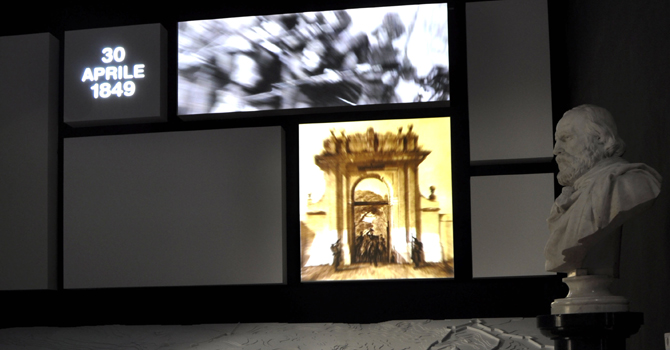The siege. The days of the siege
Le cure più importanti della Repubblica furono riservate all’organizzazione dell’esercito, trovandosi presto in una drammatica condizione di accerchiamento da parte delle potenze cattoliche, cui si era appellato il papa per rientrare nei suoi domini.

The Republic gave prominence to the organization of the army, being encircled Catholic troops, to which the pope had appealed for help. A war commission was created. It was animated by Carlo Pisacane, who despite giving up conscription, tried to extend it to 38,000 men, however the figure was never reached. The model was the French one, the most comprehensive for what concerned the organization and training of an army. The first clash with the French army took place on April 30. Oudinot, commander of the transalpine troops, sought to overcome the Roman defensive line from the Janiculum, but the Republican soldiers, after a fierce fight, not only held their positions, but forced the French to retreat back to Villa Pamphili. Once again, Garibaldi showed great tactical awareness, managing to counter the Bourbon troops a few days later. The fight with the French resumed on June 3, when many brave patriots died and Oudinot’s army managed to occupy several important positions. The siege lasted until July 1, the day the Republic was forced to capitulate. Garibaldi and a thousand of men left Rome, while Mazzini sailed to Marseilles with a U.S. passport on 12 July. Some patriots, such as Cernuschi and Pisacane, were detained as prisoners for a few days.


































